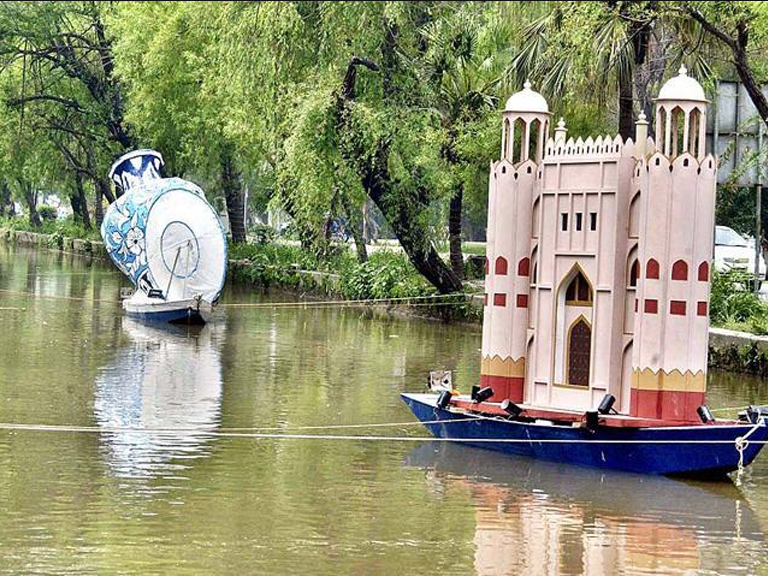Lahore Canal that runs through the east of the city is a 60 KM long waterway. It was initially built by the Mughals. It was then upgraded by the British in 1861, and further advanced after independence. It is an important part of the city’s cultural heritage.
Lahore Canal لاﻫﻮر ﻧﻬﺮ begins at the Bambawali-Ravi-Bedian (BRB) Canal that runs through the east of the city of Lahore, Punjab, Pakistan. The 37 miles (60 km) long waterway was initially built by the Mughals. It was then upgraded by the British in 1861, and further advanced by Bashir Ahmed Construction Company in 1976. It is an important part of the city’s cultural heritage.
The canal, aside from its importance in irrigation purposes, forms the center of a unique linear park that serves as one of the longest public green belts and popular recreational destination spots. The average depth of the Canal is 5 feet (1.5 m) and it is bounded by roads on either side called the Canal Bank Road. At local and national festivals, the canal is illuminated with lights and decor.
The Bambawali Ravi-Bedian (BRB) Canal at the east of the city of Lahore was already constructed in the Mughal Era of the Indian Subcontinent, however, during the British Raj, the British sliced the Bambawali Ravi-Bedian (BRB) Canal and extended it on the west side (city of Lahore) till the town of Raiwind, located in the south of Lahore.
The idea to extend the canal may have possibly emerged because an irrigation system was felt necessary after a disastrous famine hit the Subcontinent in 1837-38 in which nearly ten million (one crore) rupees was spent on relief works, resulting in considerable loss of revenue to the British East India Company.
